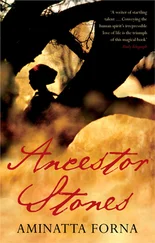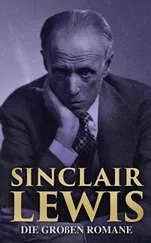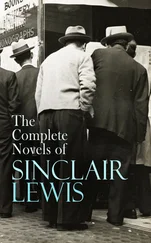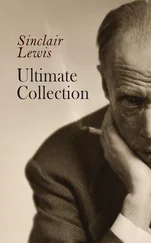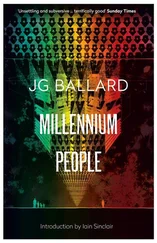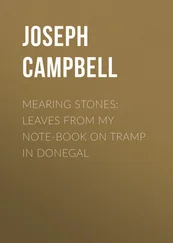Jimmy flitted from Glasgow in short trousers. He chased his old man’s unemployment as far south as Derby. But when, like Charles Edward Stuart (the Young Pretender), the easily discouraged boilermaker lost his nerve and turned for home, brave little Jimmy stayed put: a job in a garage, flattening oil cans with a hand-cranked device that left him knackered. One arm, like a Limehouse barmaid, thicker than the other. Young Seed saw art as a way of accessing women who had expectations of property. His third wife (second launderette conversion) carried him as far west as Roman Road. Social life tracked the flight of the sun (Clerkenwell, Soho, Bond Street), while his art travelled in the opposite direction; greater savagery, blanker canvases. By the time his scouting expeditions reached the Queen Elizabeth II Suspension Bridge, between Purfleet and Dartford, content was a shimmering zero. He laboured like a Whistler franchise: project image (outline of bridge) onto screen, bucket of whitewash, slap in a few lorries with fine badger brush and leave the rest misty and impressionistic. Let the buggers see what they want to see in a tribute to absence.
Jimmy ran a beat-up Volvo with tinted windscreen. The A13 looked much better that way, schizophrenic, two thirds grey and the rest tropical sunset. Grungy Brit realism invaded by Florida noir, plastic palm trees in Basildon Festival Leisure Park. Hanging an arm out of the window that wouldn’t shut, Jimmy snapped away: snooker halls, cinemas, drinking clubs with Mafia lettering on necrotic plaster. Tough weeds splitting tarmac. His roadside portfolio, the scale of it, played well in New York. The venerable critic Manny Farber, deaf but still feisty, himself a painter now, visiting England to check out the Turners, said that the only place he recognised, in a couple of weeks being schlepped around the culture, was the A13 beyond Dagenham. ‘Let down the window, kid,’ he growled, ‘I wanna smell it: New Jersey.’
Jimmy’s new style (degraded Highways Agency promo) was taken up by a gallery in Dover Street, one of those plush operations where immaculate young women find ways to pass the day on the telephone, sitting, stretching, smiling by appointment. Further in, desks are not quite so large, but they’re covered with a better class of green leather; gentlemen of a certain age, florid, drop in for an hour before lunch, without removing their overcoats. Upstairs, in private suites, the real players are as still as papal portraits (and twice as oily): sharp enough to freeze gin by looking at it.
For a season, wild man Jimmy enjoyed the status of a recommended window-cleaner. The small change he earned — around £40,000 a pop — barely covered his expenses: catalogues, private views, coke and champers for collectors. A new Dubliner, brickdust on his brogues, came over, two or three times a year (Cheltenham was one of them), tieless, white-shirted, to make a purchase against tax liabilities: another monster A13 canvas. Art with muddy footprints.
‘Takes Paddy back to the years he spent with a shovel in his hand,’ one of the grandees sneered — making sure that the brown envelope, stuffed with readies, that he slid away into his inside pocket, didn’t spoil the hang of a loose-fitting jacket. ‘Black bag merchant from Dagenham Docks. Tarmac-layer to landfill magnate in two generations.’
I was supposed to shadow Jimmy, write him up. The gallery slipped me a couple of hundred for expenses. The germ of my A13 book, Estuarial Lives , started there. The usual accident. Jimmy belonged in the first chapter, a Virgil with no staying power. A run in the Volvo and it was over. I took the decision that the road would have to be walked . Every yard of it, Aldgate to the sea: through memory, mess, corruption, dying industries, political scams, satellite shopping cities buried in chalk quarries. Defoe, Bram Stoker, Joseph Conrad. Elements were predictable, I was working from a very familiar script; elements were unexpected (the Plotlands of Basildon, the ruins of Barking Abbey surrounded by furniture warehouses and windowless blocks that peddled carpets). I wrote at pace, struggling to keep up with Jimmy Seed’s production line, working to repopulate his programmatic emptiness, those huge blank canvases.
Magazines ran extracts — and then, when every word of the thing had been sold twice over, I delivered the typescript to my publishers. One of those decent, penny-pinching, heart-on-sleeve operations that are hoping to be taken over by the Germans or Japanese. Their reps are borrowed, the chains won’t see them, but they achieve review coverage far beyond their weight (sympathy for the underdog, journalists with uncommercial projects to peddle). My riffs were posthumous but ripe with déjà vu. The culture classes, professionally lazy and ill-informed, are only comfortable when the job has been done for them. Having absorbed, without noticing it, earlier versions of the A13 walk — as art criticism, psychogeography, anthologised fiction — they greeted my book with tempered enthusiasm. Copies didn’t leap from the shelves and nobody copped a hernia unloading stock. Broadsheets echoed each other, leading to radio fillers, talks at recently upgraded polytechnics: the University of Clapton, the Swanley Interchange Arts Festival, a Sunday afternoon recital in an otherwise engaged Finchley Road chainstore.
Estuarial Lives , measured in column inches, was a success; just enough to be a nuisance. Students from Paris and Milan (with bulging folders). Thesis brokers from the Cambridge fringe (stern questions about unread French philosophers). Freelancers on the nod from skateboard magazines. I didn’t make any money, but I felt the burn of scorched time. The loss of anonymity. Locally, my wanderings were interrupted by cyclists eager to tell me about their projects: video surveillance of empty buildings, albums of rephotographed graffiti, underground streams tracked to source. A nervous woman, catching me at a petrol station on Mare Street, where we are all nervous (with good reason), presented me with a padded envelope that contained the evidence of an extraordinary art work. It anticipated, and surpassed, as the author rightly asserted, my crude urban expeditions. The man whose magnum opus the Mare Street woman was promoting, peddling around town, had cultivated a massive brain tumour, which pressed angrily on his optic nerves. He had X-rays of the intruder — which he superimposed over a map of medieval London, the walled City. He walked the shape of his pain, his unlanguaged parasite, into the map. His tiny script, pages of it, was harder to read than my own. But I caught the drift. I didn’t want to be suckered into another malign fiction, in which his story became my story, my reading of his cuneiform text. Occultism, at this heat, was too oppressive.
It was time to go.
I pulled in to an empty bay, near the air machine. An Asian man in a big car needed my slot. He was very polite. He didn’t honk. He waited as long as he could, then got out to tap, quite gently, on my window. The walker, the one with the dead foetus in his brain, believed that his pilgrimage would heal the hurt, free his spirit. By carving a mark into an historic landscape, he would exorcise the ancient thing that was devouring him. If I accepted the gift, walked his walk (X-rays in hand), I would activate my own demons. I would cultivate a duplicate tumour, a Smithfield thalamus. Brain-meat wrinkled in an opaque bowl.
‘You staying long, mate?’
I reversed, swerved out of there, into the maelstrom of Hackney traffic. A12, Blackwall Tunnel, A2, M25, A21. Let the car drive itself. As a book-dealer, I made the run to the coast on a regular basis. Retirement colonies, modest shops packed with plunder. Fish supper, stroll on the beach. Home. Suspension groaning. A cloud of filth, shaped like one of M.R. James’s demons, followed me onto the High Weald.
Читать дальше




